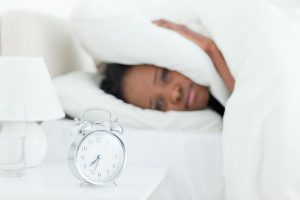Spring Forward With One Less Hour of Sleep
Here we are again, the morning after setting our clocks forward an hour.

Last night, when you made the change before going to bed at 11:00 pm – which yesterday would have been 10:00 pm and still feels like 10:00 pm – you knew you just lost an hour. But the time when most of us really feel the loss of that hour is the next morning when the alarm goes off.
At 6:00 am.
Which yesterday would have been 5:00 am. And still feels like it. Groan.
If you’re…
(a) smart
(b) chronically organized
(c) able to easily fall asleep the moment you lie down in bed
(d) all of the above
…you remembered to go to bed when the newly changed clock said your normal bedtime, and you fell right asleep.
If you’re like most people, you didn’t go to bed at the “normal” time (according to that dratted clock) because…
(a) it felt too early
(b) you didn’t feel sleepy yet
(c) you were running late and still had laundry to fold
(d) all of the above
…then you must drag yourself out of bed and go forth, bleary-eyed and exhausted, into the cruel world.
Does Anyone Really Like This?
Millions of people dread the annual early-March clock reset. We know it’s one of the roughest mornings to get ourselves up and going. What can really be rough is getting the kids up and going that morning. Like they aren’t tough enough to get up on any given morning.
In my home state of Arizona, we have opted out of DST and are permanently on standard time all year long. That means we don’t have to go through the twice-a-year clock cha-cha. The major inconvenience for us here is that we have to remember how many hours difference we are from other places in the country at any given time of the year, because that does change. (The exception here in Arizona is the Navajo Nation who has not opted out and whose tribal lands also include territory in Utah and New Mexico.)
Hawaii has also opted out of DST, along with American Samoa, Guam, the Northern Mariana Islands, Puerto Rico, and the United States Virgin Islands.
The Florida legislature has passed a bill called the Sunshine Protection Act of 2018 which would have the state permanently on DST year-round. All they need now is the federal government’s approval, which requires passage by Congress and signing into law by the President.
Likewise, California passed Prop 7 in November 2018 with 60% voter approval to remain on DST for the entire year. Assembly Bill 7 has been introduced to the state legislature, and if passed by both houses, will be submitted to the feds for approval.
In the U.S., public opinion seems to be leaning towards doing away with the clock change one way or another. A YouGov survey released just a few days ago indicates that 54% of Americans support putting an end to DST. People in western states are more inclined to feel this way, as are Gen Xers and Baby Boomers.
But it’s not just people in the United States that are getting fed up with this practice. An article on timeanddate.com tells us:
“In 2018, the European Commission issued a draft directive to scrap DST in the European Union (EU) permanently. In a public survey, more than 80% of 4.6 million respondents voted to put an end to seasonal clock changes altogether, but several EU Member States have called for more time before putting an end to the practice.”
They’ve called for “more time”.
Ironic, isn’t it?
What are your thoughts about Daylight Saving Time? Would you vote to opt in year-round or would you prefer opting out? Email us at support@sleepsatisfaction.com with your vote.
